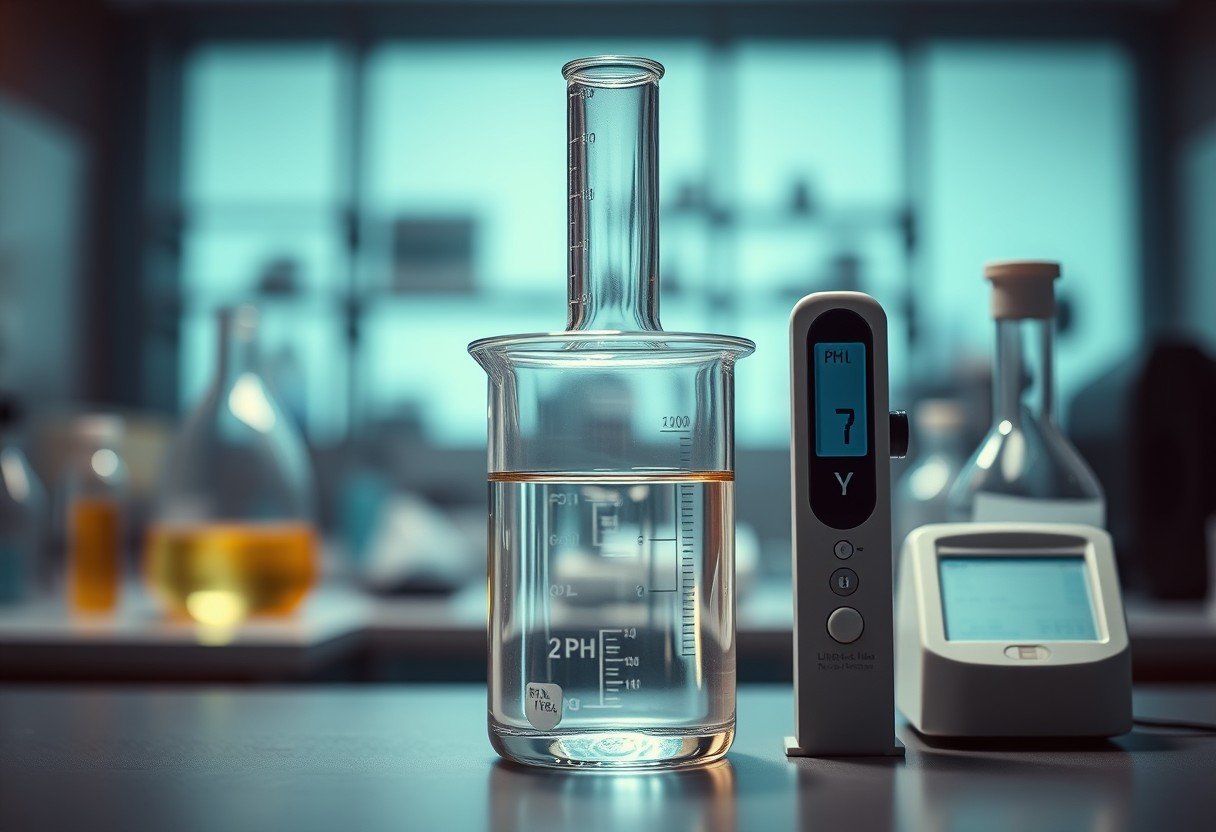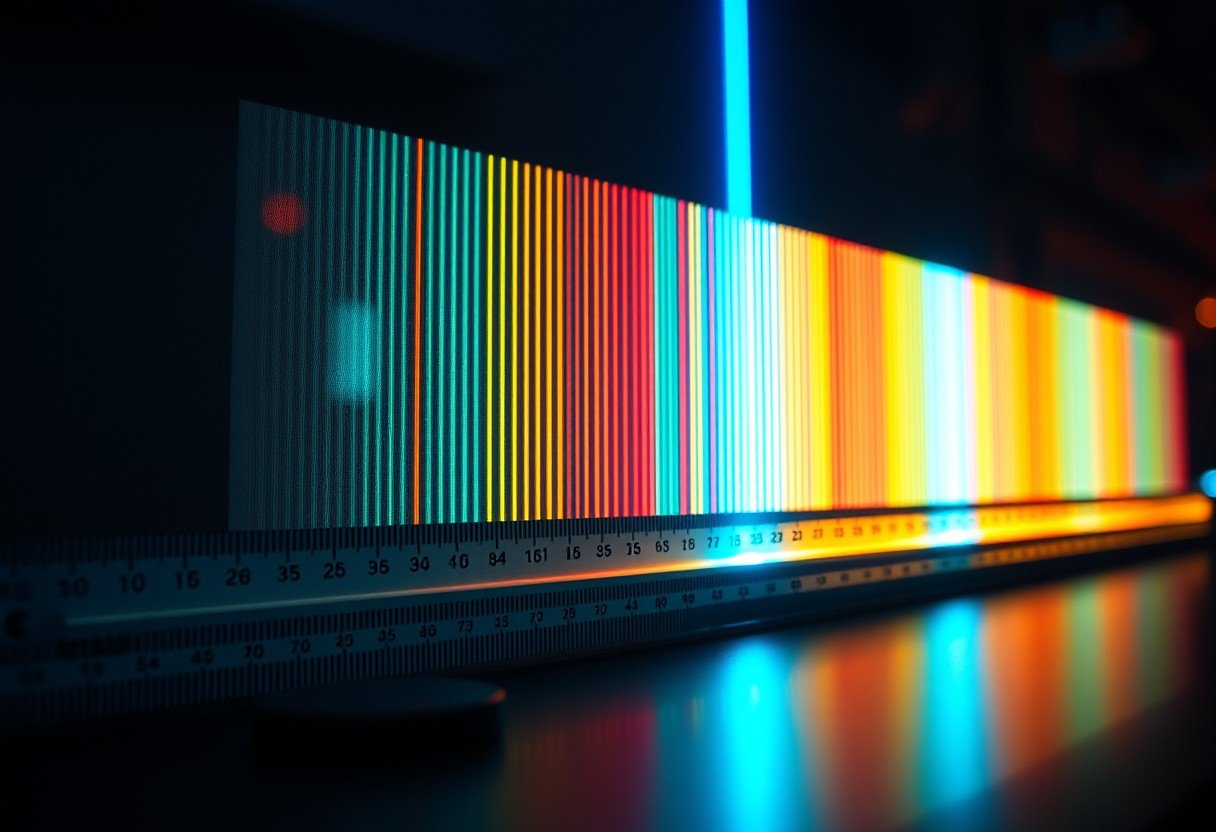Understanding the pH of a solution before you add any base is a fundamental concept in chemistry. When 0 mL of base has been added, the pH is simply the solution’s original pH. This initial value is determined entirely by the substances already in the solution, such as an acid. Knowing this starting point is crucial for predicting how the solution will react during an experiment, especially in a process called titration.
What is pH and Why Does it Matter?
The term pH is a measure of how acidic or alkaline a solution is. The scale generally runs from 0 to 14. A pH of 7 is neutral, like pure water. Anything below 7 is considered acidic, and anything above 7 is considered alkaline or basic.
This measurement is incredibly important in many areas of science and daily life. In our bodies, blood must maintain a specific pH to function correctly. In agriculture, the soil’s pH affects how well plants can absorb nutrients. Even the products we use, like soap and shampoo, are formulated to a specific pH to be safe and effective.
Essentially, pH tells you about the concentration of hydrogen ions (H+) in a solution. A higher concentration of hydrogen ions means a lower pH and a more acidic solution.
The Role of Acids and Bases in a Solution
To understand pH, you need to know about acids and bases. In simple terms, acids are substances that release hydrogen ions into a solution. This increase in hydrogen ions is what makes the solution acidic and lowers its pH.
Bases do the opposite. They accept hydrogen ions, effectively removing them from the solution. This leads to a lower concentration of hydrogen ions and a higher, more alkaline pH.
When you haven’t added any base to your solution yet, the pH is dictated only by the acid or other components already present. The initial state of your solution sets the stage for any chemical changes that will follow.
How to Determine the Initial pH of a Solution
There are several ways to measure the initial pH of your solution. The method you choose often depends on how accurate you need to be and the setting you are working in. For a quick estimate, pH strips are useful, but for precise scientific work, a digital meter is the standard.
Some of the most common methods include:
- Digital pH Meters: These electronic devices provide the most accurate and precise pH readings. They are essential for laboratory settings where exact measurements are required.
- pH Indicator Strips: These are paper strips treated with chemicals that change color at different pH levels. You simply dip the strip in the solution and compare the color to a chart.
- Liquid Indicator Solutions: These are dyes that change color when added to a solution. The final color indicates the approximate pH level.
Choosing the right tool is the first step in correctly identifying your solution’s starting point before any base is introduced.
Calculating the pH Before Adding a Base
If you know the concentration of the acid in your solution, you can calculate the initial pH without even measuring it. This is especially straightforward for strong acids, which completely separate in water.
The formula used for this calculation is pH = -log[H+]. In this formula, [H+] represents the concentration of hydrogen ions in moles per liter (M). Since no base has been added, this calculation gives you the exact starting pH of your solution.
For example, if you have a 0.1 M solution of hydrochloric acid (HCl), a strong acid, the concentration of H+ is also 0.1 M. The pH would be -log(0.1), which equals 1. This simple calculation provides a powerful way to predict the acidity of your solution.
| Acid Concentration [H+] | pH Calculation | Resulting pH |
| 1.0 M | -log(1.0) | 0 |
| 0.01 M | -log(0.01) | 2 |
| 0.0001 M | -log(0.0001) | 4 |
What Happens When You Start Adding a Base?
The initial pH, when 0 mL of base has been added, is your baseline. It is the starting point on a titration curve. Once you begin to add a base, it will start to react with the acid in a process called neutralization.
This reaction consumes the hydrogen ions, which causes the pH to slowly increase. As you add more base and get closer to the equivalence point—the point where the acid has been completely neutralized—the pH will begin to change very rapidly.
Knowing the initial pH allows you to properly track these changes and understand the properties of your solution. Without this starting value, it would be difficult to interpret the results of your experiment accurately.
Real-World Importance of Initial pH
Understanding the starting pH of a solution is not just an academic exercise; it has major real-world applications. In the food and beverage industry, the initial pH of products like yogurt or soda is critical for taste, preservation, and safety.
In pharmaceuticals, the pH of a drug formulation can affect its stability and how it is absorbed by the body. Environmental scientists constantly monitor the initial pH of water bodies like lakes and rivers. A sudden drop in pH (more acidic) can indicate pollution and harm aquatic life.
From manufacturing cosmetics to treating wastewater, controlling pH is essential. Every process begins with knowing the starting point: the pH of the solution before anything else is added.
Frequently Asked Questions
What determines the pH of a solution if no base is added?
The pH is determined entirely by the concentration of acids or other substances already present in the solution. For example, a solution of a strong acid will have a very low initial pH.
Why is it important to know the pH before adding a base?
Knowing the initial pH provides a baseline for experiments like titrations. It helps you understand the solution’s starting properties and accurately track how the pH changes as a base is added.
Does adding pure water to a solution change the initial pH?
Yes, adding pure water will dilute the solution. This reduces the concentration of the acid, which in turn will raise the pH, moving it closer to neutral (pH 7).
Can a solution have an initial pH above 7 without any base being added?
Yes, a solution can be naturally basic. For instance, a solution of sodium bicarbonate (baking soda) in water is alkaline and will have an initial pH above 7 before any additional base is introduced.
What is the equivalence point in a titration?
The equivalence point is the stage in a titration where the amount of added base is just enough to completely neutralize the acid that was initially in the solution. This point is often marked by a sharp and sudden change in pH.









Leave a Comment